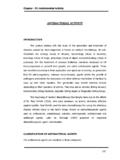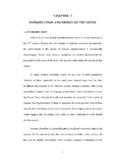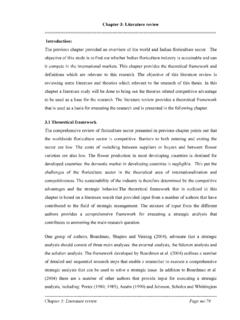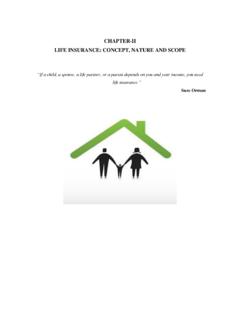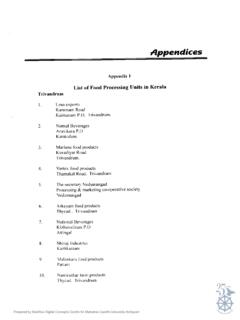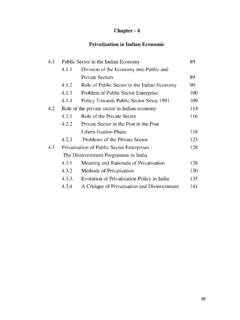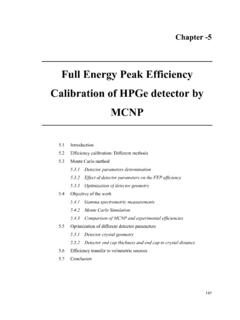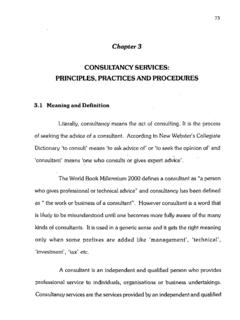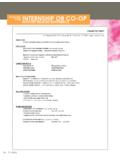Transcription of REVIEW OF LITERATURE - Shodhganga
1 48 Chapter Two REVIEW OF LITERATURE This chapter attempts to present a brief resume of research findings related to academic stress, hardiness, achievement motivation, and problem solving behavior. In the present context, the interest of the researcher is to REVIEW the findings of past researches. The previous researches help the researchers to conceptualize and hypothesize phenomenon, and do critical appraisal which may contribute with regard to design appropriate methodology. Keeping in mind these objectives, the researcher reviewed LITERATURE in order to obtain information and the status of work being done in this area.
2 Therefore, LITERATURE from various sources was extensively reviewed in the light of the present investigation. In the words of Turney, The researcher who undertakes a research project without systematically reviewing other studies and writings related to the problem is not only a derelict in his responsibility as a researcher but also endangers the successful completions and evaluation of his research. Academic Stress Attending college is the positive experience for many, yet many students also experience college as chronically stressful due to academic requirements , tests, papers, presentations (Murphy & Archer, 1996).
3 Childhood stress is increasing in both its frequency and severity. Some factors that may contribute to this stress include: the pressure on children to mature emotionally and psychologically at increasing earlier ages, a decrease in the number of caring parents and subsequent reduction in parent s love and support. As a child grows and reaches puberty a psychological metamorphosis takes 49place and this is adolescence stage. It is developmental period during which a growing person makes a transition from childhood to adulthood. Irvine (2002) also identifies a range of stressors in children from parental divorce and separation, to academic and social failure.
4 Throughout the adolescent years, stressful experiences are also considered to be increasing in intensity, as prominent stressors involving family dysfunction, peer demands and academic concerns are faced by adolescents (Frydenberg, 1991b). Adolescence period can be considered as confusing time. In this period the individuals are not longer viewed as children but, nonetheless, are considered to be too immature to be treated as adults. The reversal from childhood to adolescence and from adolescence to childhood have both been considered developmental transition s individual tends to become more vulnerable during periods of biological, social and psychological transitions.
5 Transitions are defined as the movement from one state of certainty to another with a period of uncertainty in between. The transitions from elementary to secondary school represent for many students a stressful move. School size is significantly larger, academic standards are more rigorous, school circles and peer pressures change more profoundly than at any other time in life. Adolescence is popularly described as a time of heightened egocentrism, volatility and experimentation with risky behaviors. Close emotional ties to parents are challenged as adolescents begin to exercise their independence and individuality.
6 In the Indian context, the decision of the courses is done at the senior secondary level. The future of the student takes its shape according to these courses. The academic pressure among the adolescents starts at this level because it is directly related to their job options. 50 Traditionally, males were more likely to select science and engineering tracts and females were more likely to enroll in humanities or liberal arts tracts. More recently, efforts have been made in many countries to increase the representation of females in science and engineering. Both the genders experienced the same amount of stress.
7 Boys were more likely to complain of stressful situations such as poor academic performance, getting sick, moving to a new town and other events unconnected to interpersonal problems. Girls experienced most of their stress from relationship including fights with their siblings, peer or friends. Academic problems have been reported to be the most common source of stress for students (Aldwin & Greenberger, 1987). Schafer (1996) observed that the most irritating daily hassles were usually school-related stressors such as constant pressure of studying, too little time, writing term papers, taking tests, future plans, and boring instructors.
8 Stress associated with academic activities has been linked to various negative outcomes, such as poor health (Greenberg, 1981; Lesko & Summerfield, 1989), depression (Aldwin & Greenberger, 1987), and poor academic performance (Clark & Rieker, 1986; Linn & Zeppa, 1984). Lesko and Summerfield (1989) found a significant positive correlation between the incidence of illness and the number of exams and assignments. Similarly, Aldwin and Greenberger (1987) observed that perceived academic stress was related to anxiety and depression in college students. A number of studies have explored a relationship between stress and poor academic performance (Clark & Rieker, 1986; Linn & Zeppa, 1984; Struthers, Perry & Menec, 2000).
9 Felsten and Wilcox (1992) found a significant negative correlation between the stress levels of college students and their academic performance. Similarly, in a study, 51 Blumberg and Flaherty (1985) found an inverse relationship between self-reported stress level and academic performance. Struthers et al. (2000) also reported that a high level of academic stress was associated with lower course grades. Students experience a high level of academic stress due to exams, assignments, time pressure, grade pressure, and uncertainty. In summary, this stress has a detrimental effect on their academic performance.
10 Stressed children show signs of emotional disabilities, aggressive behavior, shyness, social phobia and often lack interest in otherwise enjoyable activities. In a study Dawood (1995) revealed that students stress affects their academic performance. He further showed that the most frequently mentioned stressor by students was school and fear related stressors. Many teenagers tend to become non-conformist and fall prey to teenage depression in response to a variety of growing up anxieties. However, stress induced fears and anxiety in children adversely affects children s performance at various levels.
